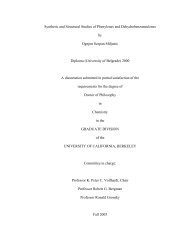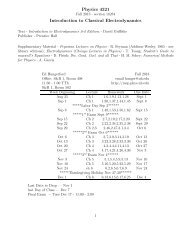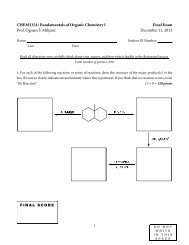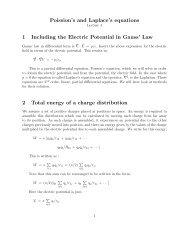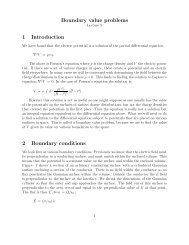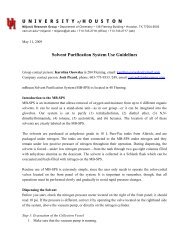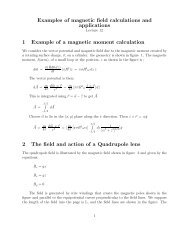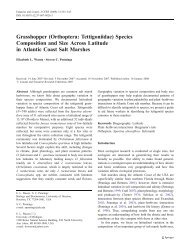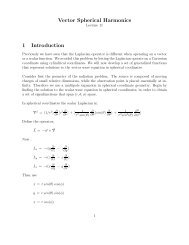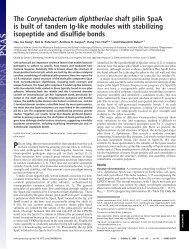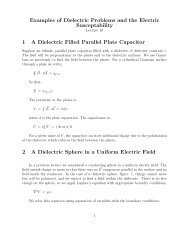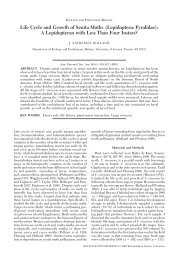Scattering 1 Classical scattering of a charged particle (Rutherford ...
Scattering 1 Classical scattering of a charged particle (Rutherford ...
Scattering 1 Classical scattering of a charged particle (Rutherford ...
You also want an ePaper? Increase the reach of your titles
YUMPU automatically turns print PDFs into web optimized ePapers that Google loves.
RetardedPointn^R =c(t − t’)θβObservationPointR XAdvancedPointV(t − t’)αPresentPointFigure 9: The geometry <strong>of</strong> Chernekov radiation showing the retarded, advanced, and observationpointsThis equation is written for ∆t = (t − t ′ ) ;c 2 ∆t 2 = X 2 + V 2 ∆t 2 + 2 ⃗ X · ⃗V ∆t.This is a quadratic equation with solutions;√∆t = − X ⃗ · ⃗V ± ( X ⃗ · ⃗V ) 2 − (V 2 − c 2 )X 2(V 2 − c 2 )We have that ∆t > 0 so that there is only one real positive root for V < c which correspondsto the retarded point. For V > C there is no real root for ⃗ X · ⃗V > 0 but when ⃗ X · ⃗V < 0there are 2 solutions. This occurs for values <strong>of</strong> α > π/2 . From the discriminate;cos(α) = −[1 − (c/v) 2 ] 1/2These solutions are the advanced and retarded points, so the Lienard-Wiechart potentialscan be simply multiplied by 2 to include the advanced point as both retarded and advancedpoints are a distance X away from the observation point.Now we look more carefully at this solution which represents a shock front singularity. Thegeneral form <strong>of</strong> the angular distribution <strong>of</strong> the radiated power is written;dPdΩ= (1/2µc)Re| ⃗ E ∗ · ⃗E|R 2We develop the Fourier spectrum <strong>of</strong> the E field, by;17




